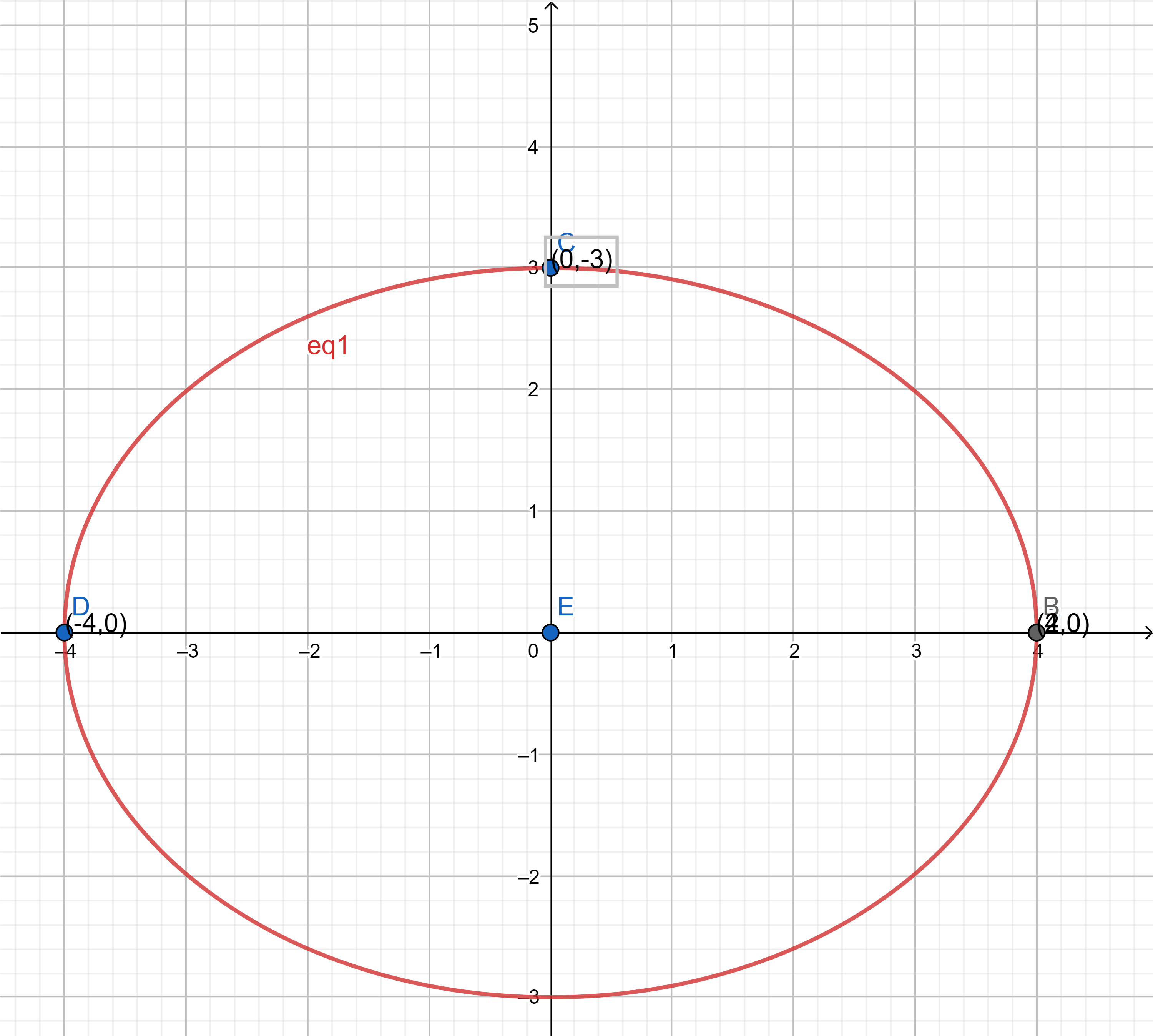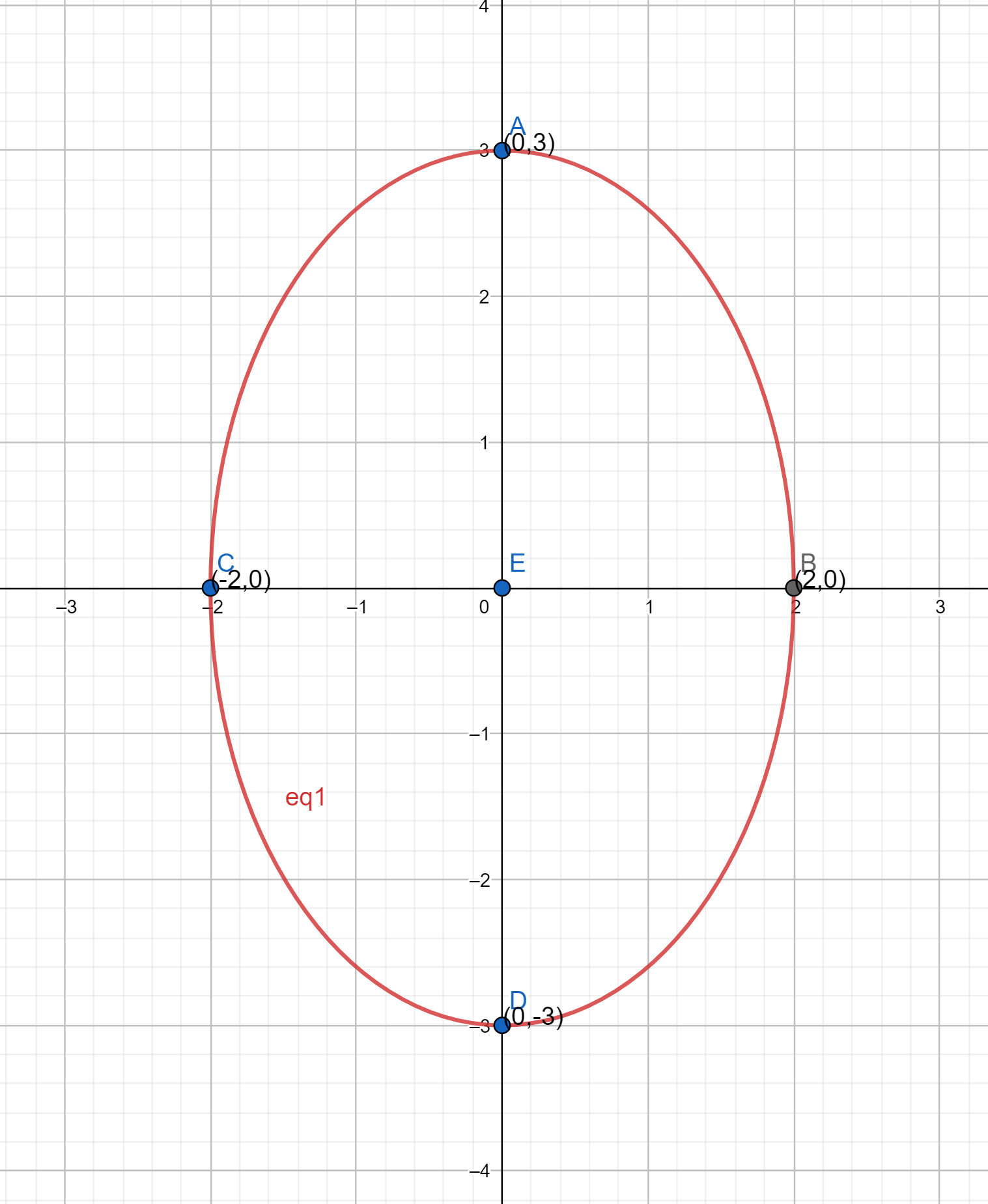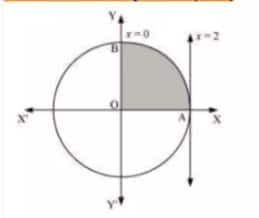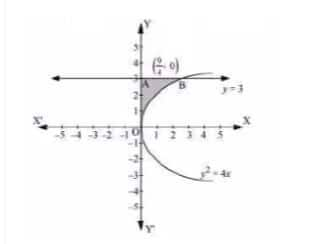NCERT Solutions for Class 12 Maths Chapter 8 Exercise 8.1 - Application of Integrals
Application of Integrals is like your favourite colouring brush that can fill any shape under every curve, no matter how abstract the shape is. It is a fundamental part of calculus that can help us calculate the area of a certain region, even with no straight sides. In exercise 8.1 of the chapter Application of Integrals, we go beyond the basics of integration and learn about how it's used in our real-life situations, like finding the area of a region or calculating the total distance travelled between two specific points. This article about the NCERT Solutions for Exercise 8.1 of Class 12 Maths, Chapter 8 - Application of Integrals, offers detailed and easy-to-understand solutions for the exercise problems, so that students can clear their doubts and understand the logic behind the solutions. For syllabus, notes, exemplar solutions and PDF, refer to this link: NCERT.
This Story also Contains
- Class 12 Maths Chapter 8 Exercise 8.1 Solutions: Download PDF
- Application of Integrals Class 12 Chapter 8 Exercise: 8.1
- Topics covered in Chapter 8, Application of Integrals: Exercise 8.1
- NCERT Solutions Subject Wise
- NCERT Exemplar Solutions Subject Wise
Class 12 Maths Chapter 8 Exercise 8.1 Solutions: Download PDF
Application of Integrals Class 12 Chapter 8 Exercise: 8.1
Question:1 Find the area of the region bounded by the ellipse $\frac{x^2}{16}+\frac{y^2}{9}=1.$
Answer:
The area bounded by the ellipse : $\frac{x^2}{16}+\frac{y^2}{9}=1.$

Area will be 4 times the area of EAB.
Therefore, Area of EAB = $\int_0^4 y\,dx$
$= \int^4_{0}3\sqrt{1-\frac{x^2}{16}} dx$
$= \frac{3}{4}\int^4_{0}\sqrt{16-x^2} dx$
$= \frac{3}{4}\left [ \frac{x}{2}\sqrt{16-x^2}+\frac{16}{2}\sin^{-1}\frac{x}{4} \right ]^4_{0}$
$= \frac{3}{4}\left [ 2\sqrt{16-16} +8\sin^{-1}(1)-0-8\sin^{-1}(0)\right ]$
$= \frac{3}{4}\left [ \frac{8\pi}{2} \right ]$
$= \frac{3}{4}\left [ 4\pi \right ] =3\pi$
Therefore, the area bounded by the ellipse will be $= 4 \times 3\pi = 12\pi$ units.
Question 2: Find the area of the region bounded by the ellipse $\small \frac{x^2}{4}+\frac{y^2}{9}=1$
Answer:
The area bounded by the ellipse : $\small \frac{x^2}{4}+\frac{y^2}{9}=1$

The area will be 4 times the area of EAB.
Therefore, Area of EAB $= \int_0^2 y\ dx$
$= \int^2_{0}3\sqrt{1-\frac{x^2}{4}} dx$
$= \frac{3}{2}\int^2_{0}\sqrt{4-x^2} dx$
$= \frac{3}{2}\left [ \frac{x}{2}\sqrt4-x^2 +\frac{4}{2}\sin^{-1}\frac{x}{2} \right ]^2_{0}$
$= \frac{3}{2}\left [ \frac{2\pi}{2} \right ]$
$= \frac{3\pi}{2}$
Therefore the area bounded by the ellipse will be $= 4\times \frac{3\pi}{2} = 6\pi$ units.
Question 3: Choose the correct answer in the following
$\small (A)\hspace{1mm}\pi$
$\small (B)\hspace{1mm}\frac{\pi}{2}$
$\small (C)\hspace{1mm}\frac{\pi}{3}$
$\small (D)\hspace{1mm}\frac{\pi}{4}$
Answer:
The area bounded by circle C(0,0,4) and the line x=2 is

The required area = area of OAB
$\int_0^2 y\,dx = \int_0^2 \sqrt{4 - x^2}\,dx$
$= \left[ \frac{x}{2} \sqrt{4 - x^2} + \frac{4}{2} \sin^{-1} \frac{x}{2} \right]_0^2$
$= 2 \cdot \frac{\pi}{2}$
$= \pi$
Hence, The correct answer is $\pi$
Question 4: Choose the correct answer in the following.
(A) $\small 2$
(B) $\small \frac{9}{4}$
(C) $\small \frac{9}{3}$
(D) $\small \frac{9}{2}$
Answer:
The area bounded by the curve $y^2=4x$ and y =3

The required area = OAB
$= \int_0^3 x\,dy$
$= \int_0^3 \frac{y^2}{4}\,dy$
$= \frac{1}{4} \left[ \frac{y^3}{3} \right]_0^3$
$= \frac{9}{4}$
Hence, The correct answer is $\small \frac{9}{4}$
Also Read,
Topics covered in Chapter 8, Application of Integrals: Exercise 8.1
The main topic covered in class 12 maths chapter 8 of Application of Integrals, exercise 8.1 is:
Area under a curve: The exercise starts with calculating the area under the curve $y=f(x)$, between two points on the X axis, as $x=a$ and $x=b$. The area can be found using definite integrals as: $A=\int_a^b f(x) d x$.
Also Read,
NCERT Solutions Subject Wise
Below are some useful links for subject-wise NCERT solutions for class 12.
- NCERT solutions class 12 chemistry
- NCERT solutions for class 12 physics
- NCERT solutions for class 12 biology
- NCERT solutions for class 12 mathematics
NCERT Exemplar Solutions Subject Wise
Here are some links to subject-wise solutions for the NCERT exemplar class 12.
Frequently Asked Questions (FAQs)
13 questions are in total in exercise 8.1 Class 12 Maths.
Mainly area under the curve is discussed in this exercise.
This is very important for boards as well as other subjects like Physics also.
No, it is less difficult than Chapter 7 Integrals.
Maily area and at higher level volume etc. are discussed in this.
Total 3 exercises are there including miscellaneous exercise.
Questions related to CBSE Class 12th
On Question asked by student community
Failing in pre-board or selection tests does NOT automatically stop you from sitting in the CBSE Class 12 board exams. Pre-boards are conducted by schools only to check preparation and push students to improve; CBSE itself does not consider pre-board marks. What actually matters is whether your school issues your
The CBSE Sahodaya Class 12 Pre-Board Chemistry Question Paper for the 2025-2026 session is available for download on the provided page, along with its corresponding answer key.
The Sahodaya Pre-Board exams, conducted in two rounds (Round 1 typically in December 2025 and Round 2 in January 2026), are modeled precisely
Hello,
You can get the Class 11 English Syllabus 2025-26 from the Careers360 website. This resource also provides details about exam dates, previous year papers, exam paper analysis, exam patterns, preparation tips and many more. you search in this site or you can ask question we will provide you the
Hello,
No, it’s not true that GSEB (Gujarat Board) students get first preference in college admissions.
Your daughter can continue with CBSE, as all recognized boards CBSE, ICSE, and State Boards (like GSEB) which are equally accepted for college admissions across India.
However, state quota seats in Gujarat colleges (like
Hello,
The Central Board of Secondary Education (CBSE) releases the previous year's question papers for Class 12.
You can download these CBSE Class 12 previous year question papers from this link : CBSE Class 12 previous year question papers (http://CBSE%20Class%2012%20previous%20year%20question%20papers)
Hope it helps !
Popular CBSE Class 12th Questions
Applications for Admissions are open.
As per latest syllabus. Physics formulas, equations, & laws of class 11 & 12th chapters
JEE Main Important Chemistry formulas
Get nowAs per latest syllabus. Chemistry formulas, equations, & laws of class 11 & 12th chapters
JEE Main high scoring chapters and topics
Get nowAs per latest 2024 syllabus. Study 40% syllabus and score upto 100% marks in JEE
JEE Main Important Mathematics Formulas
Get nowAs per latest syllabus. Maths formulas, equations, & theorems of class 11 & 12th chapters
